
| Orange Fruit Borer (one synonym : Teras absumptana Walker, 1866) ARCHIPINI, TORTRICINAE, TORTRICIDAE, TORTRICOIDEA | (donherbisonevans@yahoo.com) and Stella Crossley |
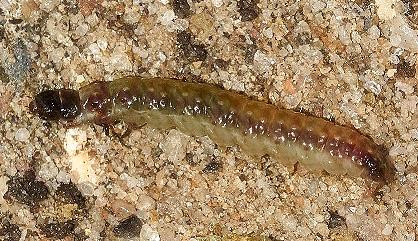
(Photo: courtesy of
Harold McQueen,
North Maclean, Queensland)

| Orange Fruit Borer (one synonym : Teras absumptana Walker, 1866) ARCHIPINI, TORTRICINAE, TORTRICIDAE, TORTRICOIDEA | (donherbisonevans@yahoo.com) and Stella Crossley |

(Photo: courtesy of
Harold McQueen,
North Maclean, Queensland)
This Caterpillar has variable colours with vague broad brown bands along the body, a dark brown head and prothorax, and has a stiff white hair projecting each side from each segment.
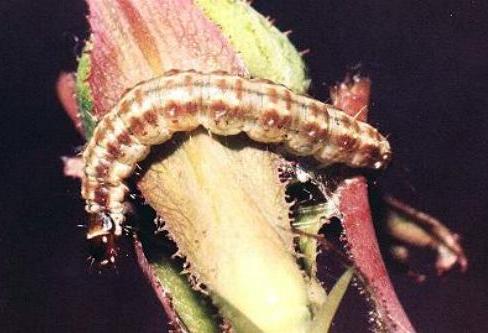
The caterpillar is a pest: attacking flowers, fruit, and foliage of a wide variety of agricultural plants, fruit trees, and weeds, including:
The caterpillar grows to a length of about 2 cms. It pupates in a cocoon protected by leaves joined around it.
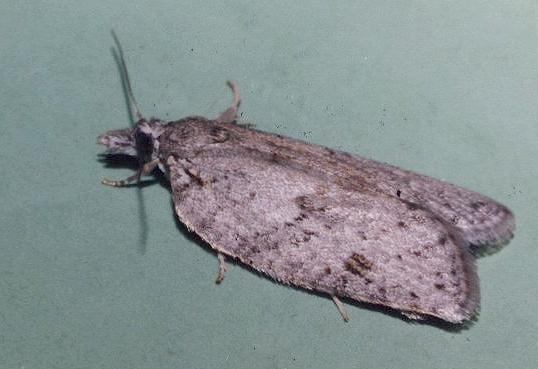
The adult moths are varied in colour and pattern, being a patchy speckled brown or grey, often with a broad indistinct dark diagonal stripe across each forewing. The moths have a wingspan of about 2 cms.
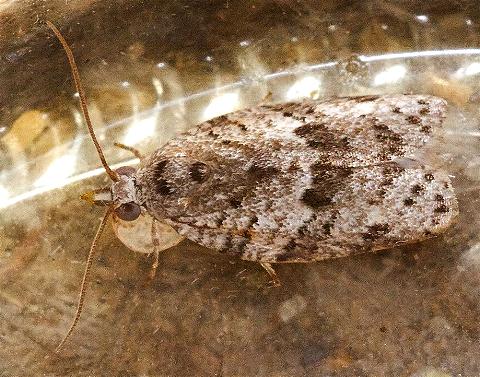
The eggs are laid in a mass protected by a fence of scales deposited around them by the female moth.
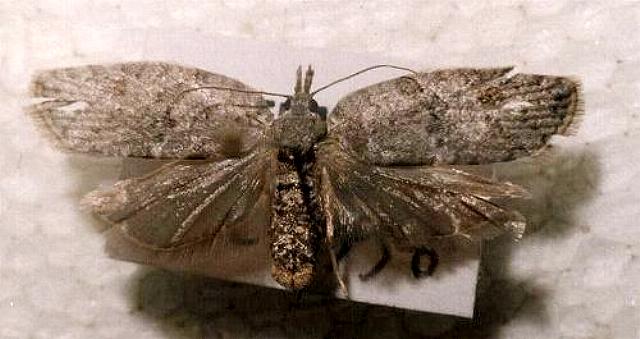
The species is endemic to Australia, and has been found in
and has unfortunately also appeared in
The pest has been controlled by the use of: Endosulfan or Carbaryl.
Further reading :
Ian F.B. Common,
Moths of Australia,
Melbourne University Press, 1990,
figs. 27.12, 51.15, pp. 68, 279.
Francis Walker,
Tortricites & Tineites,
List of the Specimens of Lepidopterous Insects in the Collection of the British Museum,
Part 28 (1863), p. 301, No. 67.
 caterpillar |  butterflies |  Lepidoptera |  moths |  caterpillar |
(updated 4 September 2011, 21 April 2017, 26 October 2020)